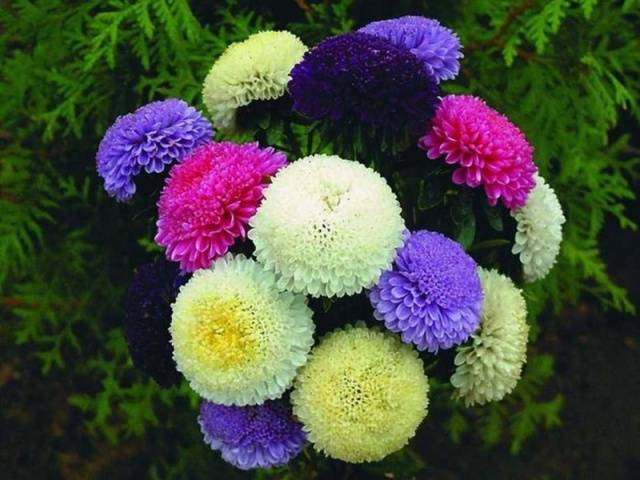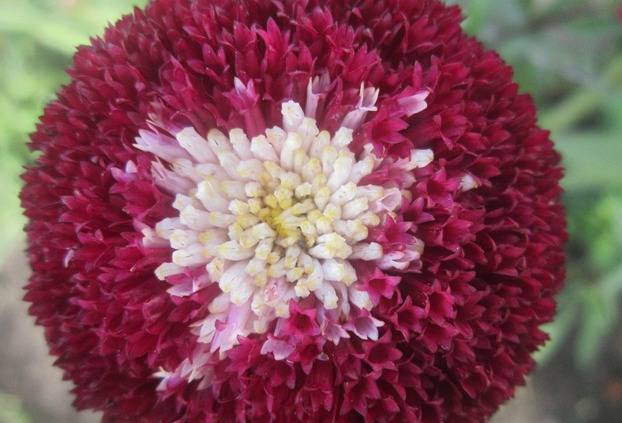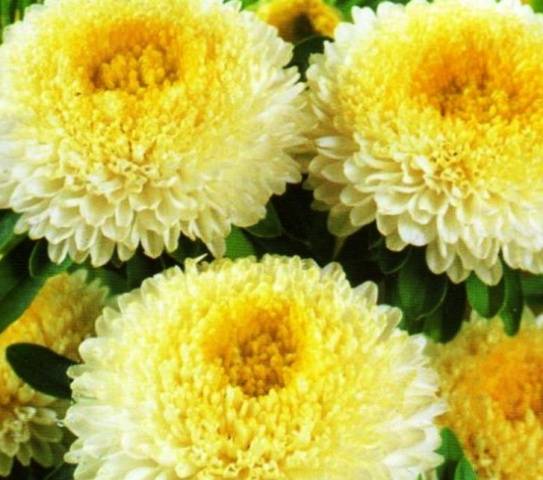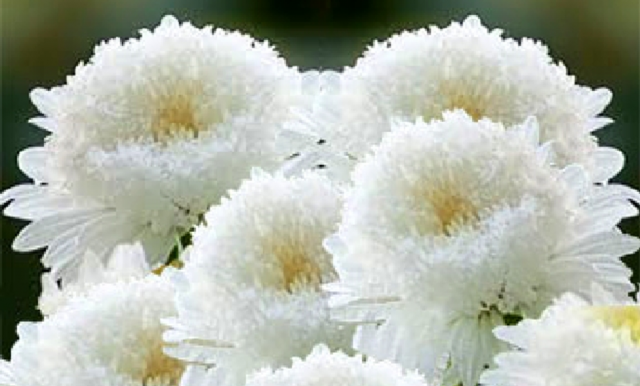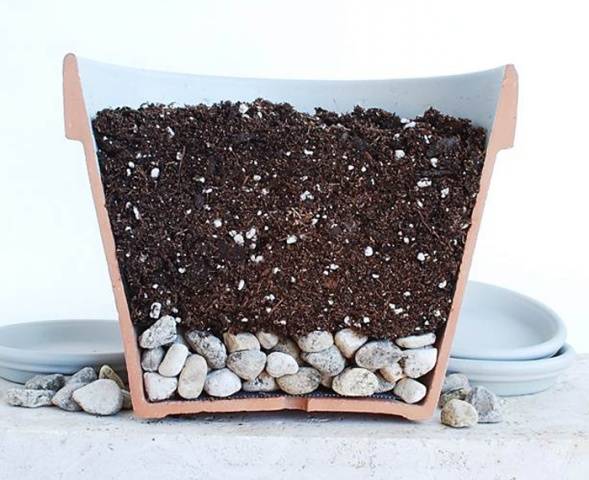Content
Pomponnaya aster is one of the types of garden asters. According to the new classification of plants, they are referred to the genus Callistephus of the Astrovye family. The correct name sounds like "Chinese callistephus". This culture is one-year or two-year, the place of growth is the Eurasian countries, the initial appearance is in China. More than two hundred varieties of such asters, bred before the beginning of 2018, differ from each other in the height of the bushes, the structure and shape of the flowers, as well as the iridescent color of the petals. The pompom aster can be identified by its peculiarly shaped flower - it is a hemisphere of densely growing petals collected in an outlet, which in its appearance resembles a pompom of a baby's hat.
Description
All plants are made up of the same parts: roots, stems, leaves, flowers and fruits. Botanical description of flowers allows you to find out what distinctive shapes, sizes and colors are characterized by each part of the culture. Astra pomponnaya also has its own varietal characteristics:
- The roots of the pompon aster are widely branched, fibrous, superficial, the depth of occurrence is no more than 25 cm, can quickly recover from damage.
- Stems - erect, strong, have longitudinal grooves, covered with fine fine hairs, their color is light green or with a pink tint (depending on the variety). The height of the plant varies from 20 to 90 cm, many processes are formed on the stem, which makes the bush thick and splendid.
- Aster leaves are pompom-shaped, dark green saturated color, small-sized leaves are located in the upper part of the stem, large ones are closer to the ground.
- Flowers are basket inflorescences, along the outer circle of which the petals in the form of tongues are located in several tiers, the inner circle is filled with thin petals-tubes, which stand straight, tightly pressed against each other. The color of flowers is determined by the varietal affiliation; in some cases, mixes of the same variety, but of a wide variety of colors, are created. Their diameter is from 4 to 8 centimeters.
- The fruit of the pompom aster is a cone-shaped seed capsule that stores seeds of different sizes, it depends on the variety of asters.
- The culture propagates, like all annual plants, only by seeds.
In the fall, the seed pods open, the seeds fall into the ground, winter well and germinate again in the spring. In this case, the flowering of the pompom aster is early, it is only necessary to thin out the bushes sometimes.
Varieties
If the rose is called the queen of the garden, then the pompom aster is a little princess who loves to dress up in a wide variety of "dresses". The coloring of her clothes is similar to the rainbow palette, including many shades of the primary colors. We offer you a photo and description of some varieties of pompom asters.
"Winter cherry"
Coloring - the extreme petals-tubules of the pompom aster are painted in a light burgundy color, in the center they are snow-white. The petals grow densely, each of them opens in the form of five-lobed sockets, which makes the flower cap seem even more magnificent.
The height of the compact aster bush reaches 60 cm, on straight, slightly leafy stems, many peduncles are formed.During the season, about 25 ovaries are formed; for their continuous formation, it is necessary to remove the already wilted ones, so as not to slow down the process of the appearance of new flowers.
The diameter of one aster flower is up to 8 cm, sometimes more. The flowering period begins in July and can last until autumn frosts. Many plants at this time are already preparing for winter, and the pompom aster Winter cherry still adorns and revives the boring autumn landscape of the garden with its appearance.
Aster planting in open ground begins in April. Further care consists in performing normal work: loosening the soil, removing weeds, watering and feeding. Do not forget also about timely cutting of old dried inflorescences.
Aster flowers Winter cherry is used for cutting and composing autumn bouquets. In the photo you see a typical specimen of this aster variety.
"Yellow"
The color of the flower is yellow, but not monochrome. The ligulate petals of the pompom aster are pale yellow at the edges, closer to the center, turning into tubular petals, they become rich yellow, in the center they are almost orange. The reed petals are arranged in several tiers.
The height of the pompom yellow aster bush is 40-55 cm, the size of the flowers is small (up to 4 cm in diameter), the branching of the stems is average. During the growing season, the shrub forms up to 35 inflorescences. The beginning of flowering - July, duration - until frost. Landing in the ground is timed to the middle or end of May. Grown from seed.
The flowers of such an aster are good for cutting for composing monochromatic bouquets or decorating compositions in combination with other representatives of the floral world.
"Princess Diana"
Delicate snow-white flowers adorn the aster bushes of this variety. It is believed that it was named so in honor of everyone's beloved English princess. They are simple and adorable, like the most famous woman in the world.
The bush of the plant reaches 80 cm in height, branches strongly, the leaves grow densely, creating additional volume. The flowers of the aster are pompous, the multi-tiered petals are white at the edges, in the center they are slightly touched by yellowness.
The diameter of the flowers of such an aster is 11 cm, one bush is capable of forming up to 27 flower ovaries per flowering season. For seedlings, seeds are sown in March or April. Aster blooms in early June, the flowering period lasts a long time, until the end of October.
Pompom aster flowers Princess Diana is used to decorate the middle tier of flower arrangements in a garden landscape. Bouquets of cut snow-white aster flowers can be used to decorate wedding processions and banquet halls. With their coloring, they support the main color of the wedding - pure white, immaculate.
"Princess mix"
From the photo located at the bottom of this paragraph, you can determine that several varieties of asters of the Princess variety are collected in a mix. Seed producers often offer such collections, calling the mixtures by different names, but the bottom line is that growers get many flowers in different shades. Some consider it advisable, because on the site (flower bed) you can grow plants of different colors at the same time and not bother with a separate planting, others like the monochrome flower beds.
This is a matter of taste, but there is no dispute about tastes. Using this variety of pompon aster as an example, we will talk about how to grow flower seedlings from seeds and when it is better to sow and plant in the ground. In the video at the end of the page, an experienced amateur florist gives practical advice on this topic. We advise you to see and listen to what she recommends. Maybe you will learn something new for yourself and take note of it.
Growing from seeds
Florists who constantly grow asters in their garden use the self-sowing method, when the plant independently drops its seeds in the fall, and in the spring they germinate again and again. For those who first decided to plant pompom asters, we recommend that you familiarize yourself with the order of their reproduction by seed.
Sowing seedlings
Plants of the Astrov family have a long growing season before flowering.It is possible to ensure that asters bloom earlier in the garden, which means they bloom longer, if you plant ready-made seedlings in early spring. Sowing aster seeds in this case begins in January or February (at room temperature). The seedlings will be ready for transplanting in May-April. You should proceed as follows:
- Preparation of pompom aster seeds. Aster seeds are medium in size and easy to work with when sowing. Soak them in 100 ml of salt water (1 tsp) for 2 hours. Remove the floating low-quality seeds, rinse the ones that have settled to the bottom with clean water and soak again for 30 minutes in a solution of potassium permanganate (concentration - slightly pink). Place the seeds on a damp germination cloth. After 2-3 days, when sprouts emerge from the seeds, you can plant them in an earthen substrate.
- Preparation of the pompon aster substrate. The easiest way for this process is to buy a ready-made mixture in the store, but if this is not possible, prepare the desired composition yourself: 1 part of coarse sand, 1 part of light loose humus, 2 parts of fertile garden soil. Mix all the components, put a layer of drainage material on the bottom of the container (see photo): pebbles, small stones, broken brick, pour the substrate on top, leaving 2 cm to the edge of the container.
- Spread the germinated aster seeds over the entire surface of the earth. Use small tweezers and a ruler for this so that the distance between the shoots is the same (5x5 cm). Cover the planting with a thin (1 cm) layer of the same substrate on top. Compact the ground lightly and sprinkle gently with warm water.
- Cover the container with foil or glass, put in a warm place. When sprouts and the first cotyledonous aster leaves appear, transfer the container to a more illuminated place, or add light in the same place, the shelter can be removed. The air temperature must be at least + 25 ° С. If you observed the distance when sowing seeds, then picking is not required. Before planting in open ground, the seedlings will have enough free space.
- Pompom aster seedlings are planted as warm spring days arrive, it depends on the climatic conditions of your region.
When purchasing seed from the manufacturer or on the free sale, pay attention to this. The number of germinating seeds decreases in proportion to the increase in shelf life.
Sowing in the ground
In the southern regions, it is possible to sow pompom aster seeds directly into the ground in early spring or before winter. When sowing in winter, the seeds must be dry so that they do not germinate ahead of time. In spring, planted seeds must be spilled with water with the addition of chemical growth accelerators.
In the future, both winter and spring plantings of pompom asters need to be thinned and leveled without leaving voids in the flower bed. In places where the plant has given dense shoots, carefully remove the excess, plant them in the voids formed, where the seeds did not sprout at all.
An asterisk in your garden
Translated from Greek, aster is a star. Pompom asters in your flower beds will illuminate the entire garden with their bright blooming appearance for a long time. At any point, these small stars will complement and decorate the landscape, create a festive mood even on cloudy autumn days, warm the soul, fill it with a feeling of love for the world around you.
These delicate "pompons" will remind you of the children and grandchildren growing up in your family, take care of them, and they also say that those who love flowers live happily ever after. Be happy, plant flowers for your own joy and for the pleasure of others. Taking care of plants, you first of all take care of your health.
